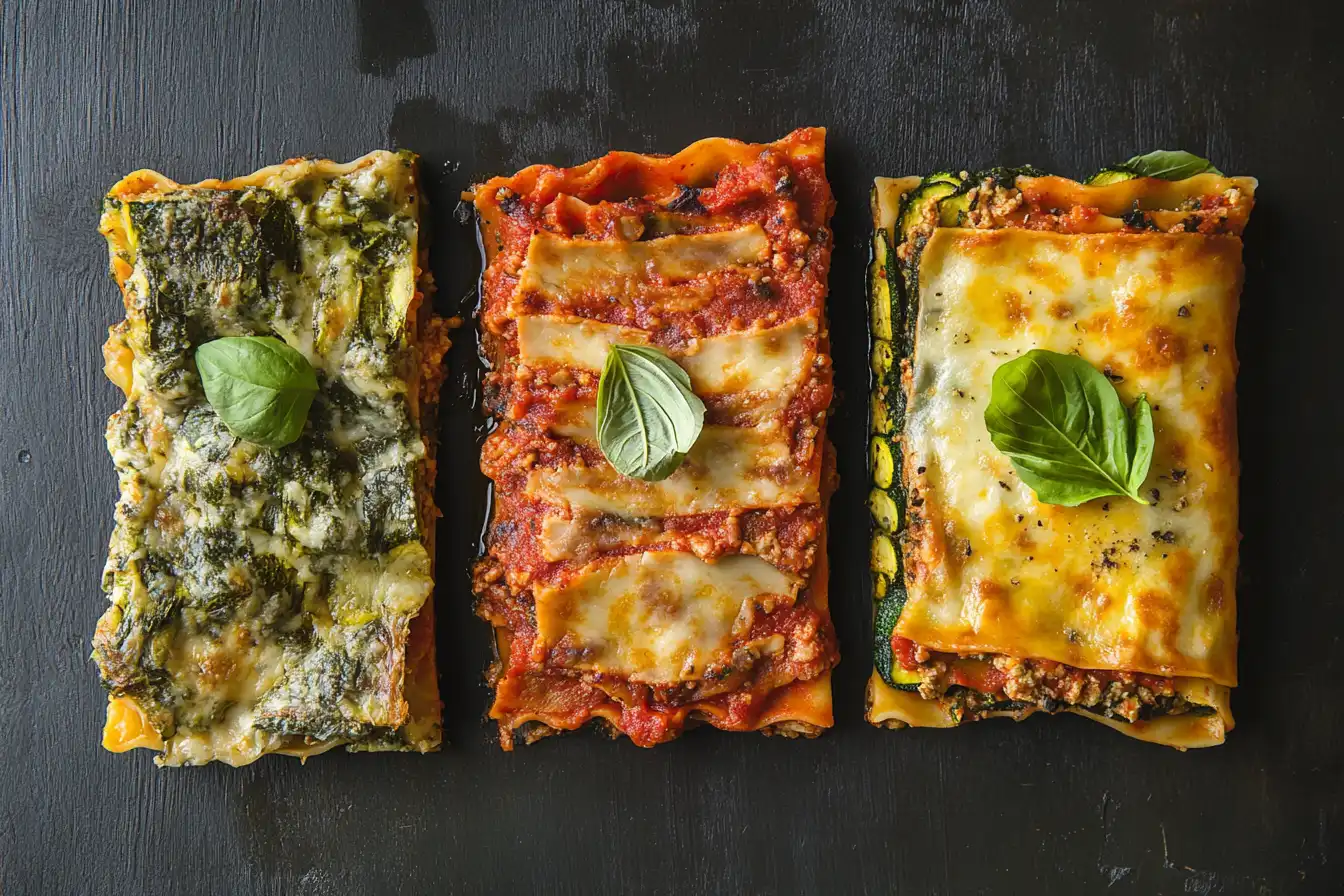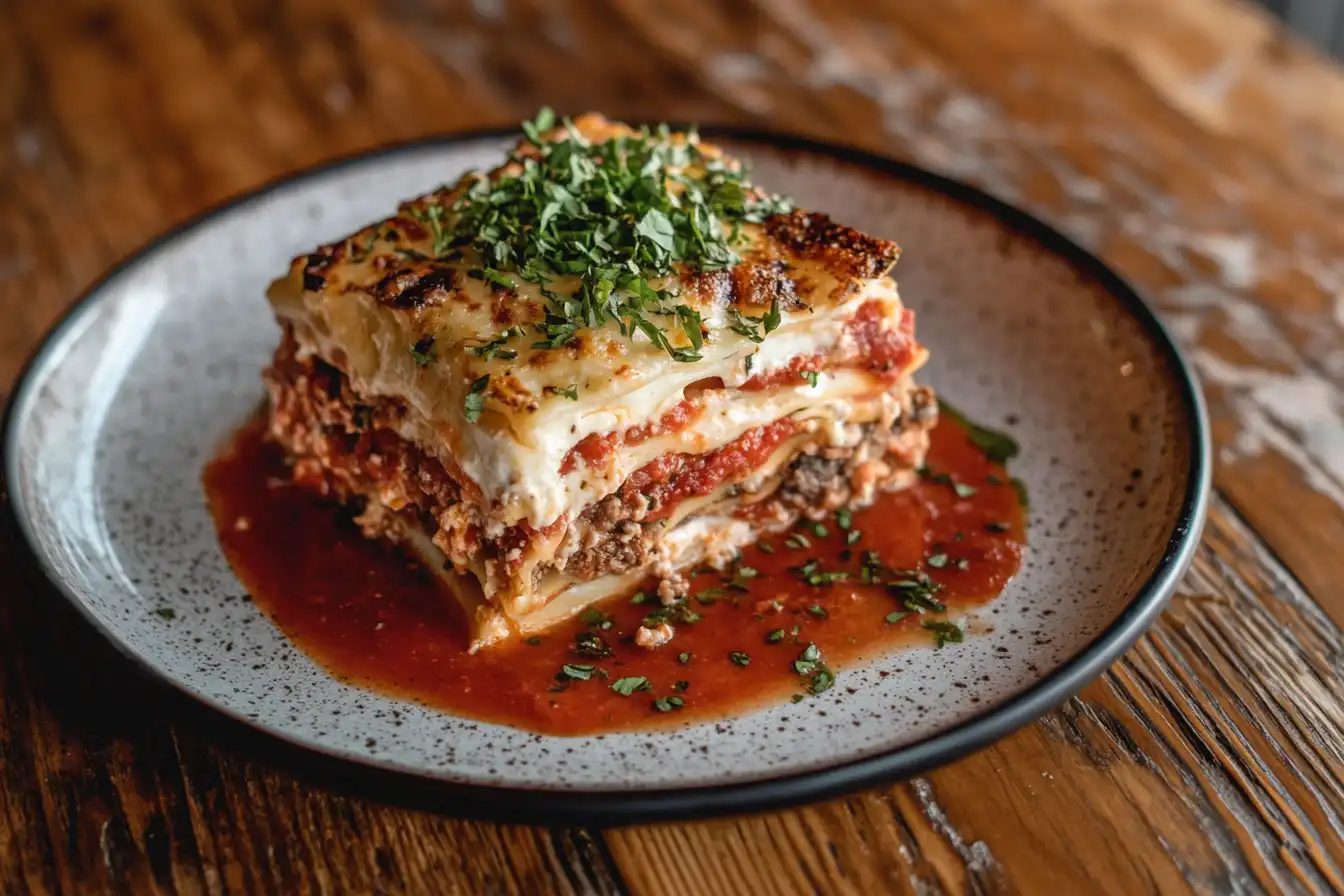Lasagna is a classic Italian dish, and knowing the correct layers for lasagna is key to crafting a perfect meal. Each layer—from the pasta to the sauce, cheese, and fillings—plays a vital role in the dish’s structure and flavor. By following the right steps, you can achieve the ideal lasagna layering guide that delivers both taste and texture. This article dives into the best practices for assembling and baking the perfect lasagna layers at home.
Understanding the Basics of the Correct Layers for Lasagna
Why the Right Lasagna Layers Matter
At its core, lasagna is a layered dish that harmonizes three essential components: pasta, sauce, and cheese. Each element plays a distinct role:
- Pasta: Forms the structural backbone, creating defined layers and adding texture.
- Sauce: Provides moisture and binds the layers together. Popular options include marinara, Bolognese, and creamy bechamel.
- Cheese: Enhances the richness and creaminess, often including ricotta, mozzarella, and Parmesan.
Essential Ingredients for Perfect Lasagna Layers
Layering isn’t just about appearance—it’s key to achieving a balanced flavor profile. Proper layering ensures each bite has the perfect blend of pasta, sauce, and cheese. Incorrect layering can lead to uneven cooking or a dish that’s too dry or soggy.
Correct Layers of Lasagna
Building the Perfect Lasagna Layers, Step by Step
To assemble a lasagna correctly, follow this traditional sequence:
- Sauce Base
Begin with a thin layer of sauce spread evenly on the bottom of the baking dish. This prevents the pasta from sticking and ensures the bottom layer is moist. - First Pasta Layer
Lay sheets of pasta over the sauce. Ensure the sheets overlap slightly for full coverage. Whether you use fresh or dried pasta, avoid leaving gaps. - Ricotta and Cheese Layer
Spread a generous layer of ricotta cheese over the pasta. Enhance this layer with shredded mozzarella and a sprinkle of Parmesan for extra depth. - Meat or Vegetable Layer
Add cooked ground meat, sausage, or vegetables. This layer provides substance and flavor. Popular options include seasoned ground beef, zucchini slices, or spinach. - Repeat Layers
Continue alternating pasta, sauce, cheese, and filling layers until the dish is filled. Each layer should be even to prevent uneven cooking. - Topping
Finish with a final layer of pasta, a generous coating of sauce, and plenty of shredded cheese. Parmesan and mozzarella are perfect for creating a golden, bubbly crust.
Tips for Maintaining Layer Consistency
- Spread each layer evenly to avoid lumps or dry spots.
- Use enough sauce and cheese to keep the pasta moist but not overly saturated.
- Press gently after each layer to compact the dish without squishing it.
Creating the Foundation for Proper Lasagna Layers
Pasta Types
The type of pasta you choose significantly affects the texture and overall quality of your lasagna. There are two primary options:
- Fresh Pasta: Offers a tender texture and absorbs flavors well. It requires minimal pre-cooking, saving time during preparation.
- Dried Pasta: A more common choice, available in stores. For best results, pre-boil the sheets until slightly pliable but not fully cooked to prevent a gummy texture.
Sauce Options
A flavorful sauce is the heart of any lasagna. Popular choices include:
- Marinara Sauce: A simple tomato-based sauce flavored with garlic, basil, and olive oil. Ideal for vegetarian lasagnas.
- Bolognese Sauce: A rich meat sauce combining ground beef or pork with tomatoes, onions, and herbs. It’s a classic option for traditional lasagna.
- Bechamel Sauce: A creamy white sauce made from milk, butter, and flour. Often used in combination with tomato-based sauces for added creaminess.
For creative twists, you can try pesto sauce, Alfredo sauce, or spicy arrabbiata.
Cheese Varieties and Substitutes
Cheese layers bring creaminess and richness to lasagna. Common choices include:
- Ricotta Cheese: Offers a mild, creamy texture, often mixed with egg for added firmness.
- Mozzarella Cheese: Provides the gooey, melted topping lasagna is famous for.
- Parmesan Cheese: Adds a salty, nutty flavor when sprinkled between layers or on top.
Substitutes for a lighter or vegan lasagna include cottage cheese, vegan ricotta, or cashew cream.
Meat or Vegetable Filling Choices
Lasagna is incredibly versatile, accommodating various fillings:
- Meat: Ground beef, sausage, turkey, or even shredded chicken work well. For enhanced flavor, season the meat with Italian herbs and garlic.
- Vegetables: Zucchini, spinach, mushrooms, and roasted eggplants are excellent vegetarian options. Layer these thinly to avoid excess moisture.
Step-by-Step Guide to Assembling Lasagna
Preparing Each Layer
- Sauce: Spread a thin base layer evenly in the dish to prevent sticking. Reserve enough sauce for the top layer.
- Pasta: Lay the sheets flat, ensuring there are no gaps. Trim as necessary for a snug fit.
- Cheese Mixture: Spread the ricotta mix evenly, ensuring all edges are covered. Add a sprinkle of shredded cheese on top.
- Filling: Distribute cooked meat or vegetables evenly, avoiding clumps.
- Repeating Layers: Repeat the process, ensuring consistent thickness for even cooking.
Tips to Avoid Common Mistakes
- Don’t Overload Layers: Overfilling can make the lasagna unstable and cause uneven cooking.
- Use the Right Dish Size: A 9×13-inch dish is ideal for a standard lasagna recipe.
- Let It Rest After Baking: Allow the lasagna to rest for 15–20 minutes before slicing. This helps the layers set and prevents them from falling apart.
Tips for Baking and Perfecting Lasagna Layers
Baking Tips for the Correct Layers in Lasagna
Proper baking is essential for achieving evenly cooked layers and a beautifully browned top. Follow these guidelines:
- Preheat the Oven: Always preheat your oven to 375°F (190°C) for consistent heat distribution.
- Bake Time: Cover the dish with aluminum foil and bake for the first 30–40 minutes to retain moisture and cook the layers thoroughly. Remove the foil for the last 10–15 minutes to allow the top to brown.
How to Ensure Your Lasagna Layers Stay Intact
- Covering with Foil: Use foil to prevent the cheese from burning during the initial bake. To avoid sticking, spray the underside of the foil with cooking spray or use parchment paper as a buffer.
- Uncovering: Removing the foil near the end of baking ensures a golden, bubbly crust. For extra crispiness, broil for 2–3 minutes, keeping a close eye to avoid burning.
Checking for Doneness
- Bubbling Edges: Look for bubbling sauce around the edges of the dish. This indicates the layers are heated through.
- Knife Test: Insert a knife into the center. If it slides in easily and comes out hot, your lasagna is ready.
Resting Period
After baking, let the lasagna rest for 15–20 minutes before cutting. Resting allows the layers to set, preventing the dish from becoming soupy or falling apart.
Common Variations in Lasagna Layering
Creative Twists for the Correct Layers in Lasagna
- Italian Lasagna al Forno: A traditional recipe featuring meat sauce and bechamel with fewer cheese layers.
- Neapolitan Lasagna: Known for its inclusion of hard-boiled eggs, small meatballs, and ricotta cheese.
- American-Style Lasagna: Often packed with ricotta, mozzarella, and a robust tomato-meat sauce.
Using a Lasagna Layering Guide for Dietary Options
- Gluten-Free Lasagna: Use gluten-free pasta or replace pasta sheets with thinly sliced zucchini or eggplant.
- Vegan Lasagna: Swap ricotta for cashew cream, mozzarella for plant-based cheese, and use a vegetable or tofu filling.
- Low-Carb Lasagna: Substitute pasta with thinly sliced vegetables or cabbage leaves.
Specialty Additions
- Seafood Lasagna: Incorporate crab, shrimp, or scallops with a creamy white sauce.
- Mexican-Style Lasagna: Use tortillas instead of pasta and fill with seasoned ground beef, black beans, and queso.
- Breakfast Lasagna: Replace pasta with hash browns, using layers of eggs, cheese, and breakfast meats.

FAQs About the Correct Layers for Lasagna
What Happens if Layers Are Uneven?
Uneven layers can result in an inconsistent cooking process. For example, thicker layers may remain undercooked while thinner ones could overcook. To avoid this, always spread each ingredient evenly and use a consistent amount for every layer. A spatula or the back of a spoon works well for even distribution.
Can I Make Lasagna Without Ricotta?
Yes, lasagna can be made without ricotta. Common substitutes include:
- Cottage Cheese: Similar in texture but slightly less creamy. Blend it for a smoother consistency.
- Mascarpone: A rich and creamy alternative that adds a luxurious touch.
- Bechamel Sauce: For a cheese-free option, this white sauce provides creaminess without overwhelming the dish.
How Do I Prevent Lasagna from Being Watery?
Watery lasagna often occurs due to excess moisture from the ingredients. To prevent this:
- Drain Cooked Vegetables: Remove water from ingredients like zucchini or spinach before adding them.
- Use the Right Sauce Consistency: Avoid overly watery sauces; cook them down if necessary.
- Don’t Overload Layers: Too much sauce or cheese can cause the dish to become soggy.
Is It Better to Use Fresh or Dried Pasta?
Both fresh and dried pasta have their merits. Fresh pasta creates a delicate texture and absorbs flavors well, while dried pasta is more accessible and holds its structure better in thick layers. Choose based on your preference and the style of lasagna you’re making.
How Do I Reheat Lasagna While Keeping Layers Intact?
To reheat lasagna without compromising its layers:
- Use an Oven: Preheat to 350°F (175°C). Cover the lasagna with foil and heat for 20–30 minutes.
- Microwave: Place a single portion in a microwave-safe dish, cover with a lid or damp paper towel, and heat on medium power to avoid drying it out.
Can Lasagna Be Made Ahead of Time?
Absolutely! Lasagna is a great make-ahead dish. Assemble the layers, cover tightly with plastic wrap and foil, and refrigerate for up to 24 hours before baking. Alternatively, freeze it for longer storage. When ready to bake, thaw it in the refrigerator overnight and adjust the baking time as needed
Conclusion
Mastering the correct layers for lasagna is both an art and a science. By starting with a sturdy sauce base and following with layers of pasta, cheese, and fillings, you can create a dish that is balanced in flavor and texture. The right ingredients—be it fresh pasta, a rich meat sauce, or creamy ricotta—ensure a delicious outcome, while proper assembly techniques guarantee a visually appealing and evenly cooked result.
Whether you stick to a traditional recipe or explore creative variations like vegan, gluten-free, or regional specialties, the principles of layering remain the same. Remember to bake the lasagna at the right temperature, allow it to rest before slicing, and always use high-quality ingredients for the best results.
Lasagna isn’t just a dish—it’s a centerpiece for gatherings, celebrations, or comforting family meals. With the knowledge of correct layering, you’re now ready to prepare a lasagna that’s not only delicious but also unforgettable. Enjoy the process, and buon appetito!

